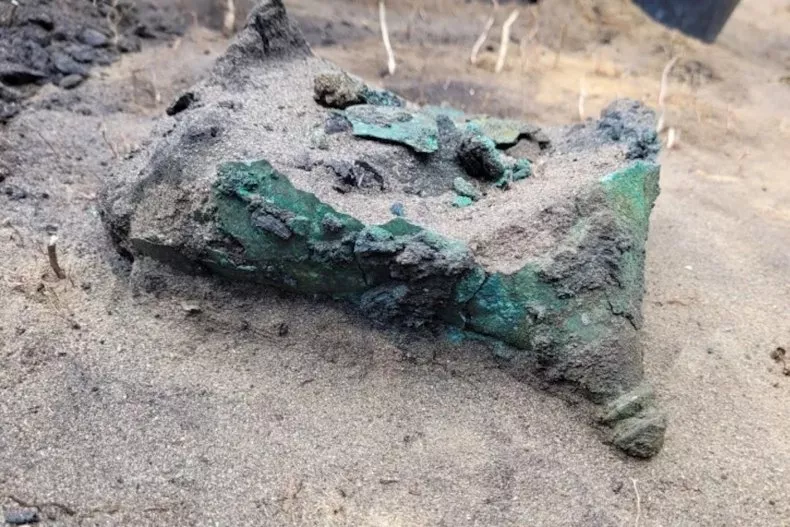
A Celtic helmet that archaeologists believe is around 2,400 years old has been discovered in Poland.
Described by its finders as “very rare,” the helmet was unearthed at the Łysa Góra site in the Mazovia region by a team from the State Archaeological Museum in Warsaw and Warsaw University’s (UW) Department of Archaeology.
Over the course of a year, the team found almost 300 ancient artifacts at the site. Bartłomiej Kaczyński, the excavation leader, said the helmet is the first of its kind to be unearthed in Poland and an example of sophisticated Celtic metallurgy.
“At first we thought it might be some kind of ancient vessel, because bronze vessels are much more common on Polish soil than helmets,” Kaczyński, who is affiliated with the State Archaeological Museum, told Science in Poland. “It was only during the discovery of one of the characteristic elements, the so-called neck piece—i.e., an arched plate near the edge—that Dr. Andrzej Maciałowicz of the UW Department of Archaeology pointed out that it could be a helmet.”
The archaeologists believe the helmet is linked to the La Tène culture of European Celts who lived during the Late Iron Age. The culture, which dates to between the 4th to 3rd centuries BCE, originated during the mid-5th century BCE, when the Celts came into contact with Etruscan and Greek peoples who traveled north from south of the Andes. La Tène existed for hundreds of years and evolved through several phases before phasing out just before the beginning of the first millennium BCE, when the Roman took control of the Celts’ territory.
The culture’s name originates from La Tène on Lake Neuchâtel in Switzerland, where the first associated objects were dug up in the late 19th century.
“The helmet is an example of the most advanced Celtic metallurgy and it seems that it may have been in the possession of a Celt,” Kaczyński added. “It was probably not given to this population, which existed at that time on the outskirts of any ancient world. The discovery therefore changes the previous perception of the scale of contacts with the Celtic world in the earlier pre-Roman period.”
